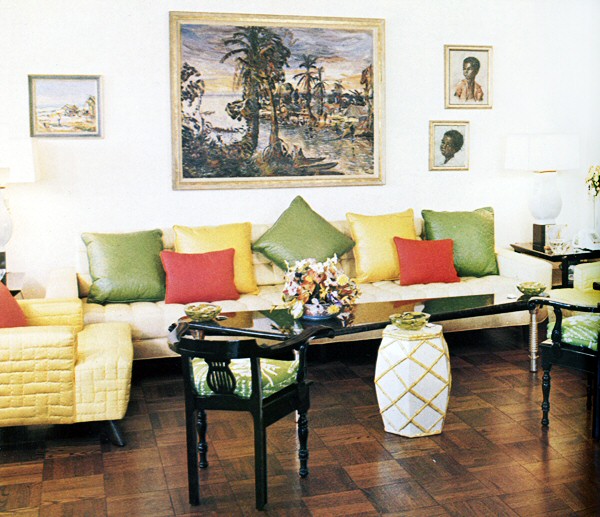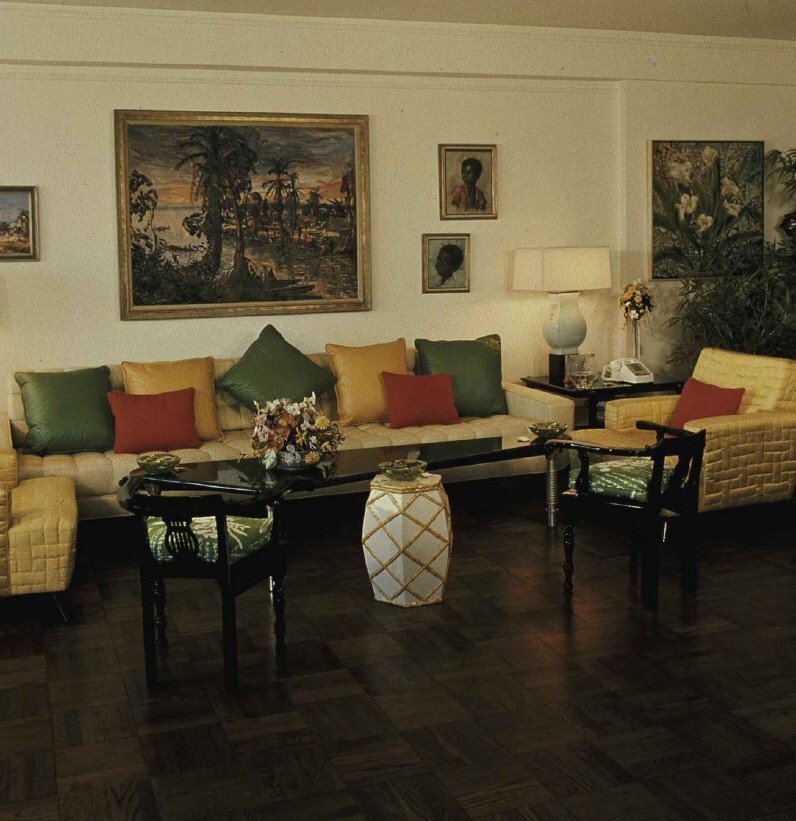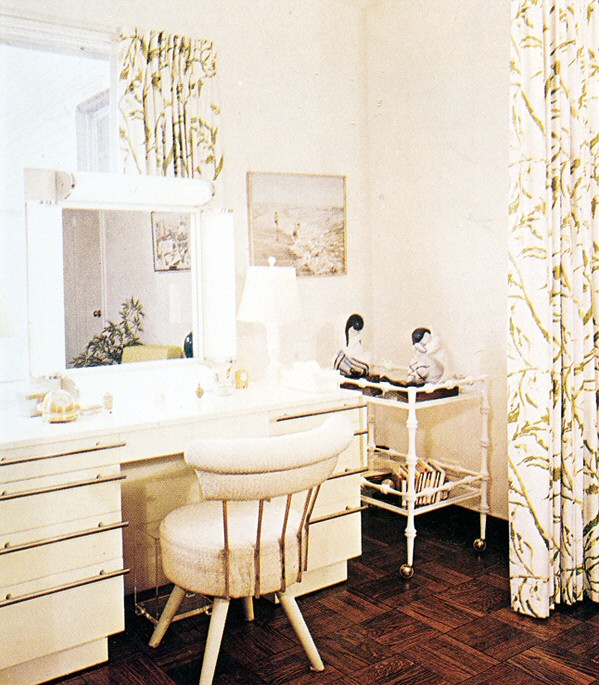Shown below are pictures from 22-H, accompanied by text from the 1977 Architectural Digest book, Celebrity Homes, which initially appeared in the March/April 1976 issue of the magazine (thanks to Angelika). (Click HERE to read the intro to the Joan section of the book.)

"A bronze bust by Salamunich conveys the strength and optimism of Joan Crawford, whose glamour graced motion picture screens for decades." The bust was placed in the living room.


"The crisp Living Room shows the influence of the late William Haines, who for years designed interiors for Miss Crawford. Pieces of furniture he created for her have acquired a period quality; Mr. [Carleton] Varney retained and freshened them with bright fabric accents. He also darkened the woods to a teak shade. The atmosphere is cool, clear and light: 'I can't stand dark walls,' Miss Crawford declared. 'I want pure, unadulterated pristine white. That's the kind of background I like for my guests, my pictures and my plants.'"

"A Parson's table in the Living Room functions as a desk, in what was essentially a working environment. It also serves as a recognition of change. Joan Crawford updated her environment--just as she always adjusted her screen portrayals--to keep pace with contemporary taste. The paraphernalia of a busy and carefully planned professional life remain in view, close at hand. Spatial divisions in the simplified design permit separate areas to function independently, yet the total room remains unified by color."

"Oriental porcelains and other collectables fill a colorful niche in the Dining Area, while comfortable floor pillows reiterate the color scheme. The custom-built dining table was used alternately as an additional work surface. Varney-designed fabric for the screen and draperies includes a Chinese-character motif: 'He told me it means "I love you, Joan,"' Miss Crawford used to say, smiling."

"Typically unsparing white light--the kind used for applying theatrical makeup--illuminates Joan Crawford's custom-designed dressing table. Designer Varney created the subtly patterned monochromatic draperies that define the Dressing Area. Other clues to the Academy Award-winning star's interests--Oriental figurines and a grouping of books--rest on a tea cart nearby: many more books and porcelains are displayed on numerous shelves in other areas of the apartment."

"A soft-toned fabric with a geometrically-conceived floral motif covers the headboard and bed, and drapes the windows in Miss Crawford's Bedroom. Custom-designed cantilevered bedside tables provide storage and surface space. Bare polished parquet flooring throughout the apartment augments the sparing [sic] tailored decor. The crisp harmonious atmosphere was well-suited to the nature of a personality noted for precision and vitality."
BELOW: Two shots of the Michaele Vollbracht painting that hung in Joan's bedroom.

